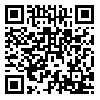Volume 4, Issue 1 (january 2020)
AOH 2020, 4(1): 516-520 |
Back to browse issues page
Download citation:
BibTeX | RIS | EndNote | Medlars | ProCite | Reference Manager | RefWorks
Send citation to:



BibTeX | RIS | EndNote | Medlars | ProCite | Reference Manager | RefWorks
Send citation to:
Soltanzadeh A, Gohari Motlagh M, Ghiyasi S. Assessing the Efficiency of Muster Point in Crisis: A Case Study in Tehran City. AOH 2020; 4 (1) :516-520
URL: http://aoh.ssu.ac.ir/article-1-176-en.html
URL: http://aoh.ssu.ac.ir/article-1-176-en.html
1- 3Assistant Professor, Department of Occupational Safety & Hygiene Engineering, Faculty of Health, Research Center for Environmental Pollutants, Qom University of Medical Sciences, Qom, Iran , soltanzadeh.ahmad@gmail.com
2- MSc, Department of Health, Safety, and Environment, Faculty of Engineering, Islamic Azad University, Central Tehran Branch, Tehran, Iran
3- Assistant Professor, Department of Environmental Engineering, Central Tehran Branch, Islamic Azad University, Tehran, Iran•
2- MSc, Department of Health, Safety, and Environment, Faculty of Engineering, Islamic Azad University, Central Tehran Branch, Tehran, Iran
3- Assistant Professor, Department of Environmental Engineering, Central Tehran Branch, Islamic Azad University, Tehran, Iran•
Abstract: (2101 Views)
Background: One of the most important factors in crisis management is the location of a muster point to reduce vulnerability. This study aimed to assess the efficacy of designated sites for muster point during a crisis in one of the districts of Tehran. Methods: This study was conducted in a cross-sectional descriptive-analytic study in 2018 using a researcher-made questionnaire. The assessed areas in this study included (1) the adequacy of the number of muster points, (2) parameters affecting muster points, (3) the use of the GIS in crisis management, (4) solutions affecting the reduction of damages, (5) attention to safety of muster points and (6) crisis management. The data were analyzed using SPSS version 22 and independent t-test. Significance level was considered as 0.05. Results: 80 crisis management experts participated in this study (63 males and 17 females). The mean age and experience of the participants were less than 40 and 15 years. The results of assessing the effeciency of the muster points in 6 studied areas showed that the highest value was related to the use of the GIS in crisis management 3.88(0.65), effective parameters on muster points 3.78(0.75) and the safety of the muster points 3.74(0.69). In addition, the analytical findings showed a significant difference with the criterion value (p<0.001). Conclusion: The findings of this study indicated that the studied muster points were sufficient and determined based on population density and geographical information system parameters. In addition, these results can be used as a basis for macro managerial decisions.
Send email to the article author
| Rights and permissions | |
 |
This work is licensed under a Creative Commons Attribution-NonCommercial 4.0 International License. |







